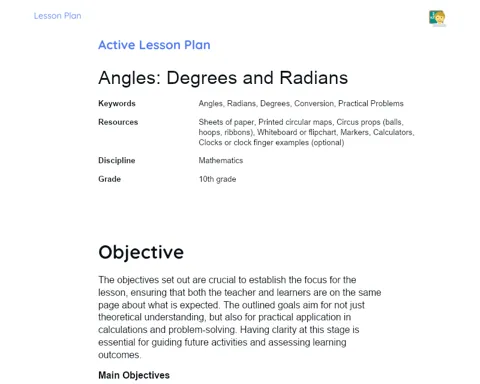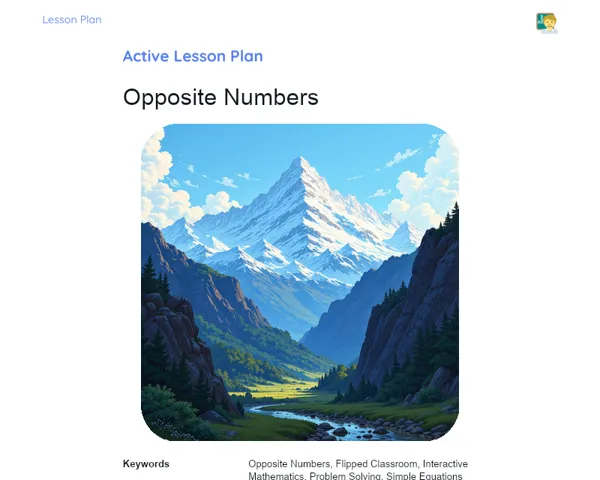Lesson Plan | Active Methodology | Census and Sample Research
| Keywords | Census Research, Sample Research, Applied Mathematics, Simulated Census, Data Analysis, Data-Driven Decisions, Group Work, Practical Problems, Methods Differentiation, Results Communication, Critical Thinking, Everyday Applicability |
| Necessary Materials | Partial data from research (sample and census), Presentation materials (paper, pens, markers, computers, projector), Opinion survey questionnaires, Spreadsheets for data organisation, Chairs arranged in a circle for group discussion |
Premises: This Active Lesson Plan assumes: a 100-minute class duration, prior student study both with the Book and the beginning of Project development, and that only one activity (among the three suggested) will be chosen to be carried out during the class, as each activity is designed to take up a large part of the available time.
Objective
Duration: (5 - 10 minutes)
The objectives stage is designed to set a clear focus for the learners' understanding. By outlining specific aims, the lesson plan ensures that learners grasp not just the theory but also how census and sample research can be practically applied. This approach directs classroom activities, maximising time and centring on essential skill development.
Objective Utama:
1. Help learners understand the difference between census and sample research by clarifying their definitions, characteristics, and how they can be practically applied.
2. Develop the learners' ability to select the right type of research for various scenarios, considering aspects such as time, cost, and accuracy.
3. Enable learners to tackle practical challenges that involve applying the concepts of census and sample research, linking theoretical knowledge with real-world examples.
Objective Tambahan:
- Promote teamwork and critical thinking through group discussions on research choices and their implications.
- Foster self-reflection in learners regarding their grasp of the content, facilitating adjustments and clarifications during the lesson.
Introduction
Duration: (15 - 20 minutes)
The aim of the introduction is to engage learners and connect their prior knowledge to the practical application of census and sample research. The initial problem situations encourage learners to think critically about selecting the best research method, laying the groundwork for applying these concepts in subsequent activities. Contextualization highlights the relevance of these techniques in the real world, enhancing engagement and appreciation of the topic's significance.
Problem-Based Situation
1. Imagine a supermarket wants to get to know its customers better to enhance their offerings. They can either interview everyone who enters on a specific day or select a representative group for interviews. Which method do you think would be more effective and why?
2. A local council wants to estimate the number of trees in a park for maintenance planning. With limited resources and the park being too big to count all the trees, how can they use a sample to get an accurate estimate?
Contextualization
Census and sample research are vital tools not only in mathematics but across various disciplines like economics, health, and social sciences, as well as in everyday life. Understanding these research types helps in making informed decisions and conserving resources like time and money. For example, recognising that not every tree needs to be counted helps the local council allocate their resources for counting and maintenance more efficiently. These principles are crucial for developing informed and critically-minded citizens.
Development
Duration: (75 - 85 minutes)
The Development segment is crafted to let learners engage actively in applying the concepts of census and sample research studied earlier. Through collaborative activities, they will resolve complex problems, make decisions, and provide justifications, all while honing teamwork and communication skills. This dynamic approach not only solidifies theoretical learning but also cultivates essential real-life skills like critical thinking and data analysis.
Activity Suggestions
It is recommended that only one of the suggested activities be carried out
Activity 1 - Data Detectives
> Duration: (60 - 70 minutes)
- Objective: Apply knowledge of census and sample research to evaluate real and fictitious data, while developing skills in argumentation and justification based on evidence.
- Description: Learners will form groups of up to 5 to explore musical preferences at school. Each group will get partial data from a fictitious survey where part of the school was surveyed entirely (census) and another part sampled, tasked with figuring out the most popular music genre.
- Instructions:
-
Split the class into groups of up to 5 learners.
-
Provide each group with the partial research data (both sample and census).
-
Have every group analyse the data to find out which music genre is most popular at school.
-
Groups must justify their choice based on the research methods and representativeness of the data they collected.
-
Each group will present their findings and justifications to the class.
Activity 2 - The Great Census
> Duration: (60 - 70 minutes)
- Objective: Gain practical understanding of the differences and applications of census and sample research, and refine planning and implementation skills for research.
- Description: In this activity, learners will conduct a census in a 'fictitious classroom country' to determine how many 'citizens' have a specific characteristic (e.g., height over 1.70m). After completing the census, groups will analyse how they could have carried out a sample study to achieve similar results.
- Instructions:
-
Group the learners into sets of up to 5.
-
Explain that each group will perform a census to count how many 'citizens' exhibit the desired characteristic.
-
After the census, ask them to analyse how they could have executed a sample study for similar results, discussing the pros and cons.
-
Each group must present their census and sampling plans.
-
Conduct a class discussion on the techniques used and their effectiveness.
Activity 3 - Opinion Researchers
> Duration: (60 - 70 minutes)
- Objective: Practice data collection and analysis using different research methods, while recognising the applications and limitations of each.
- Description: Learners will conduct a survey at school, asking classmates about a topic of common interest (e.g., the best movie of the year). One group will perform a census, and another will use sampling, then compare their results.
- Instructions:
-
Organise learners into groups of up to 5.
-
Each group will choose the topic for their research and decide on their method (census or sampling).
-
Groups will prepare their questions and gather data.
-
After collecting the data, they will analyse their findings and prepare a report.
-
Finally, each group will present their results, research methods, and conclusions to the class.
Feedback
Duration: (15 - 20 minutes)
The goal of this stage is to consolidate learners' understanding by prompting reflection on their activities and sharing discoveries with one another. The group discussion reinforces key census and sample research concepts while enhancing communication and argumentation skills. Additionally, this time is valuable for clarifying any lingering uncertainties and for the teacher to gauge the learners' comprehension of the subject.
Group Discussion
Kick off the group discussion by gathering everyone's attention to the centre of the room, where chairs are set up in a circle. Emphasise the importance of sharing findings and insights with the whole class. Encourage each group to begin their presentation with a brief overview of the problem, the methods they implemented, and the conclusions reached. Suggest discussing the differences in results from each method (census vs sample) and identifying factors that may have impacted those results.
Key Questions
1. What were some of the main challenges faced when implementing census and sample research methods?
2. How might the choice of one method over the other influence decisions based on the research outcomes?
3. Were there any unexpected findings that prompted a reassessment of the collection or analysis methods used?
Conclusion
Duration: (5 - 10 minutes)
The conclusion stage is intended to solidify learning, ensuring that learners achieve a coherent and integrated understanding of the concepts discussed. By recapping the key points, the educator aids in reinforcing the material covered, while highlighting the relevance of these concepts to real-world contexts. This final reflection prepares learners for applying their newly acquired knowledge in practical and academic settings.
Summary
In closing, the educator should reiterate the main concepts covered during the lesson, summarising the distinctions between census and sample research, while emphasising the practical scenarios where each is best applied. It's crucial that learners have a solid grasp of these concepts and their applications to reinforce their understanding.
Theory Connection
Throughout the lesson, the link between theory and practice was built through engaging and contextual activities, such as simulating a census in the classroom and exploring musical preferences among learners. These hands-on exercises enabled the learners to apply their knowledge directly to practical situations, deepening their understanding.
Closing
Finally, it's vital to underscore the significance of census and sample research in everyday life. These skills extend beyond academic settings, influencing day-to-day decisions and efficient resource management in various organisations, including government. Grasping and utilising these concepts serves as a powerful tool in shaping informed and critically-thinking citizens.


